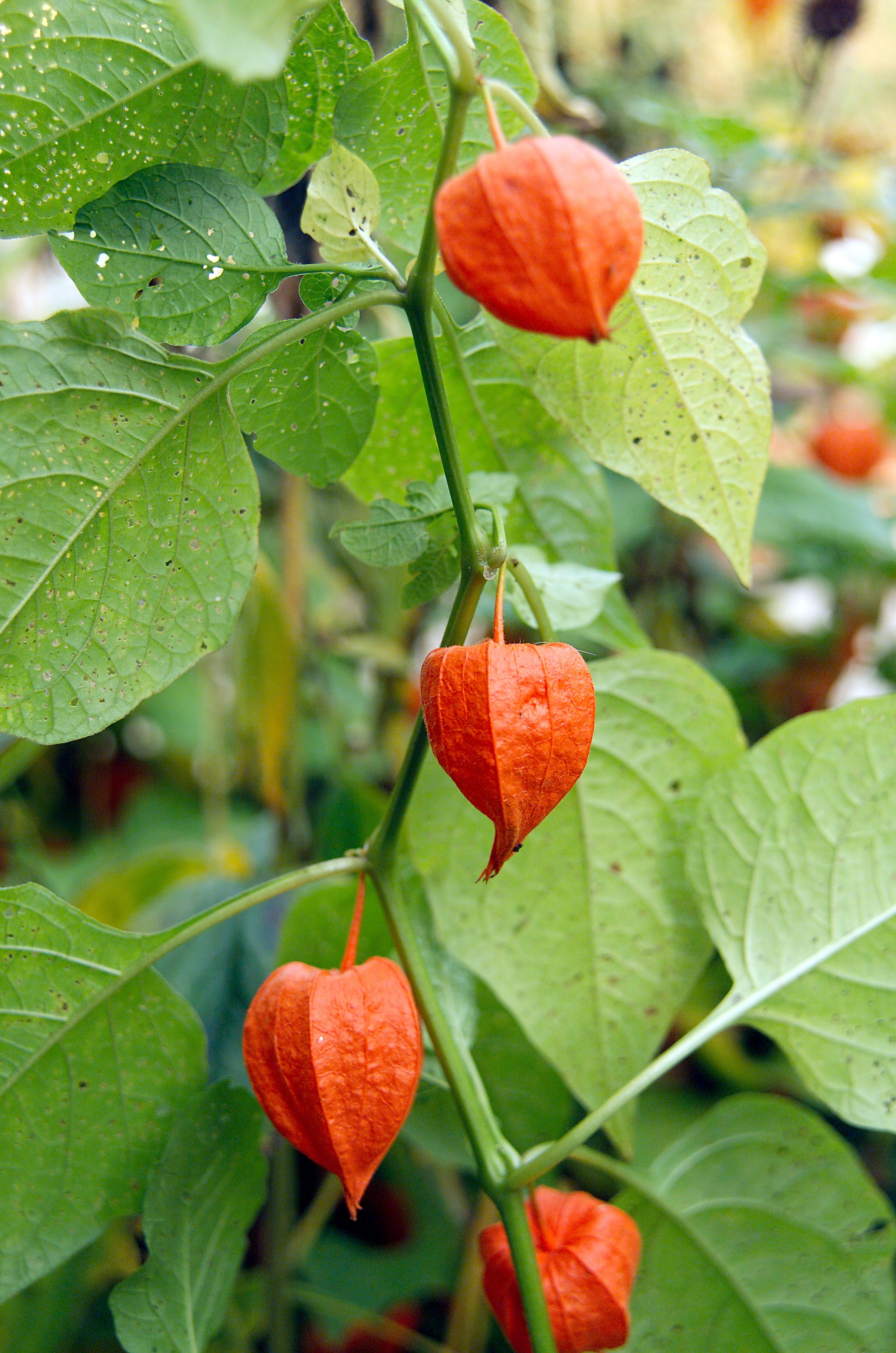
Chinese Lantern
Physalis alkekengi
Basic Information
🌿 Family: Solanaceae🗺️ Zone: 3-9
Other Names:
- Winter Cherry
- Bladder Cherry
- Strawberry Groundcherry
🌡️ Ideal Temperature : 60°F – 70°F
🔥 Heat Tolerance: Up to 85°F
❄️ Cold Tolerance: Down to -40°F
🌱 Type: Perennial
Layers
- Herbaceous
Functions
- Edible
- Medicinal
- Pollinator
- Ground Cover
Pests
No pests associated with this plant.
Description
Chinese Lantern (*Physalis alkekengi*) is a vigorous herbaceous perennial native to Europe and Asia. It grows up to 60 cm (24 inches) tall, featuring ovate leaves and nodding, creamy-yellow bell-shaped flowers that bloom in summer. The plant is renowned for its distinctive, bright orange to red, papery calyces that encase the fruit, resembling lanterns. These calyces appear in autumn and are often used in dried floral arrangements. Chinese Lantern thrives in full sun to partial shade and prefers moist, well-drained soils. It spreads by underground rhizomes and can become invasive if not managed properly.
🌞💧 Sun and Water Requirements:
- **Sun:** Prefers full sun but tolerates partial shade.
- **Water:** Requires moist, well-drained soil; regular watering is beneficial, but avoid waterlogging.
✂️🫘 Methods to Propagate:
- **Seed:** Sow seeds indoors in early spring. Transplant seedlings outdoors after the last frost.
- **Division:** Divide rhizomes in early spring or autumn to control spread and propagate new plants.
🧑🌾👩🌾 When to Harvest:
- Harvest the vibrant calyces in autumn when they are fully colored for use in decorations. Handle with care, as unripe fruits and other plant parts can be toxic if ingested.
Purpose
- Edible: The ripe berries are edible and can be used in jams and desserts; however, caution is advised as unripe fruits and other parts of the plant are toxic.
- Medicinal: Traditionally used in various cultures for its diuretic and antiseptic properties.
- Pollinator: The flowers attract bees, supporting pollination in the garden.
- Ground Cover: Its spreading habit makes it useful for covering ground, though it can become invasive.